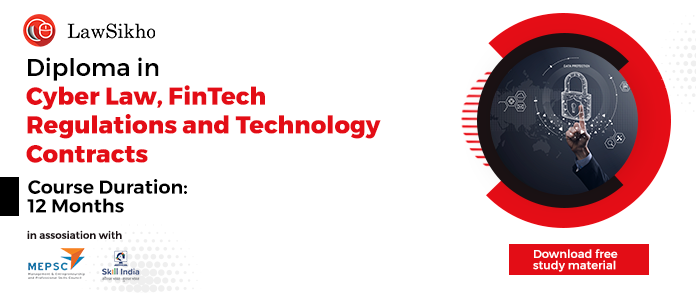This article has been written by Soham Goswami, pursuing a Diploma in Technology Law, Fintech Regulations and Technology Contracts at LawSikho.
It has been published by Rachit Garg.
Table of Contents
Introduction
With growing science and technology, we have witnessed the world changing in various fields. Every field is going hand in hand to keep pace with new technologies. When we are witnessing technological growth in all fields, why will our legal field be left behind? We have also seen several technological changes in the fields of law and forensic science.
Forensic science plays a crucial role in the legal system, especially when the question of evidence arises. It assists in collecting, matching, and analysing evidence to solve criminal cases and helps in judicial proceedings to provide justice to victims. With advancements in technology and science, various new and efficient forensic techniques have been developed that help in the investigation process. One such technique is “Brain Fingerprinting”. Brain fingerprinting depends upon technology, but in some situations when technology or forensic science does not play any role in the field of law, the legal system depends upon a certain procedure or process that helps in establishing the guilt or innocence of an accused person by relying on the facts of previous cases, and this process is known as “Evidentiary Analogy”. You’ll understand this statement better as we dive deeper into the topic.
What is brain fingerprinting
The story begins in 1995, when Mr. Lawrence A. Farwell, Director and Chief Scientist of “Brain Wave Science”, IO WA, first developed and patented the brain fingerprinting technique.
Brain fingerprinting is a forensic technique that uses Electroencephalography (EEG) to detect unique brainwave patterns that correspond to specific memories or knowledge. This technique has been used to determine whether a suspect knows about a particular crime or event. This technique is relatively new and gaining popularity in the legal system.
The main function of brain fingerprinting
Brain fingerprinting is a forensic scientific mechanism or method to detect secret information or concealed information stored in the brain by measuring Electroencephalographic (EEG) brain responses, or brainwaves, non-invasively by sensors on a headband placed on the scalp.
What is the mechanism of brain fingerprinting
The Mechanism or Technique involves the presentation of words, pictures, and videos of different kinds of sound which are related to the crime scene and is done in the following manner:-
A sensor-fitted headset with two electrodes is put non-invasively on the head or is placed on the scalp that covers the forehead between the eyebrows and the back of the head, where the brain stores experiential memory. One electrode is put on the forehead, and the other is put on the back of the head. That electrode is now connected to a computer or laptop with brain fingerprinting software via Bluetooth. After that, various kinds of pictures, words, phrases, videos, and other relevant materials are shown in a series or in an organised pattern that contains salient details about a crime or investigates the situation on a digital screen. It can be a computer, laptop, or anything else. If the brain somehow recognises that presentation or recognises something significant in that current context, then the brain sends a specific, measurable brain response known as P300 to the software. The response is characterised by a specific brainwave pattern, also known as P300-MERMER (“Memory and Encoding Related Multifaceted Electroencephalographic Response”), which is captured during that process. And that response helps in analysing whether or not the specific information is stored in the brain of that person, which helps in the investigation and the collection of evidence.
Brain fingerprinting in Indian law
Brain fingerprinting has been used in India by the National Investigation Agency (NIA) in the investigation of terrorist activities. Investigative agencies have also used this technique to determine the truthfulness of a suspect’s statement and obtain information about their involvement in a crime.
The NIA used brain mapping, or brain fingerprinting, to crack the 2006 Malegaon bomb blast case, in which six people were killed and a hundred others injured.
Recent updates on brain fingerprinting and judicial precedents
However, using brain fingerprinting evidence in Indian Courts has been a subject of debate. Let’s take a look at some of the Indian cases and news stories in which brain fingerprinting came into context.
Recently, CBI officers probing the alleged rape and murder of a 19-year-old Dalit girl in Hathras, Uttar Pradesh, arrived at the Gandhinagar – based Forensic Science Laboratory (FSL) with the four accused for their brain electrical oscillation signature profiling (BEOSP) test to be conducted.
Dr. Purshottam Swaroopchand Soni vs. The State of Gujarat (2007)

In the case of Dr. Purshottam Swaroopchand Soni vs. The State of Gujarat, the Gujarat High Court gave permission to undergo brain Mapping/brain fingerprinting In order to establish the innocence of the accused, the court permitted him to undergo brain fingerprinting.
State of Gujarat vs. Inayat Ismail Vohra (2013)
In the case of State of Gujarat vs. Inayat Ismail Vohra, the Gujarat High Court did not permit the patient to undergo brain mapping/brain fingerprinting because it was not in a proper stage to undergo brain mapping/brain fingerprinting. It was submitted that such an application at the crucial stage of the trial is nothing but an attempt to derail the proceedings. Referring to the impugned order, it was pointed out that the learned judge has not recorded any reasons justifying the purpose for undergoing the test, and neither has the accused person justified the purpose for undergoing such a test.
Admissibility of brain fingerprinting in India
The admissibility of brain fingerprinting as evidence in court is still a matter of debate in India. The Supreme Court of India has not yet definitively ruled on the admissibility of brain fingerprinting as evidence in court. Therefore, it is up to the discretion of individual judges to decide whether or not to admit the results of brain fingerprinting as evidence in a trial.
In 2010, the Supreme Court of India passed a judgement in the case of Selvi & Ors vs. State Of Karnataka & Anr (2010), where the bench observed that narco analysis, polygraph, and brain mapping tests cannot be forced upon any individual without their consent. The Honourable Supreme Court also states that investigation agencies should follow the guidelines issued by The National Human Rights Commission, Guidelines for the Administration of Polygraph Tests (Lie Detector Tests) on an Accused (2000). In that judgement, the Court also stated that the test result cannot be admitted solely as evidence. However, any information found or discovered during the forensic test can be made part of the evidence.
Brain fingerprinting in foreign law
Brain fingerprinting has been used in other countries as well, with some legal systems accepting it as valid evidence while others do not. In the United States, brain fingerprinting evidence has been admitted in some criminal trials, although it has not been universally accepted.
Grinder’s case was the first time Farwell’s technique was used in an investigation.
Evidentiary analogy
The evidentiary analogy refers to the use of evidence from similar cases to support the conclusion of a current case. It is a well-established principle in the legal system and is used to determine the guilt or innocence of a suspect. Let us look at how evidentiary analogy is used in the legal system.
Evidentiary analogy in Indian law
In India, evidentiary analogy is used to determine the guilt or innocence of a suspect. The Supreme Court of India has held that evidentiary analogy can be used to support a conviction, provided that there is a sufficient degree of similarity between the cases being compared.
One such case is Maruti Navnath Sonawane vs. The State Of Maharashtra (2002), where the Bombay High Court held that the prosecution can rely on the evidence from similar cases to establish the guilt of the accused. The Court also held that such evidence should be used with caution and only in cases where it is necessary to do so.
Brain fingerprinting vs. Evidentiary analogy
Brain fingerprinting and evidentiary analogy are both methods of determining the truthfulness of a person’s statement. Brain fingerprinting uses EEG signals to determine whether or not a person is telling the truth, while evidentiary analogy relies on observations of behaviour to make this determination as well as various factors involved. While both techniques have been used in various cases in India, several differences between them make one more effective than the other in certain situations:-
Brain fingerprinting is a relatively new concept in the criminal justice system that involves the use of neuroscience to determine whether a person has specific knowledge related to a crime. This is done by measuring the EEG signals in the brain. It only detects information-processing brain responses that reveal the information stored in the subject’s brain. It does not detect how that information is stored. Whereas evidentiary analogy is an entirely different process where the present case is being compared with some previous cases, there must be a sufficient degree of similarity between the cases being compared, and that should be used cautiously only in cases where it is necessary to do so. This can be done by using previous cases with similar facts to establish a pattern of behaviour or to establish that a particular individual was likely responsible for the crime.
Brain fingerprinting requires specialised equipment that may not be available at all times or locations. Till now, states like Karnataka, Maharashtra, and Gujarat have installed brain fingerprinting technology, which simply means it is limitedly available and it could take some time before someone can get access to this equipment and bring it into play, but hopefully in the future this will be available in various other states as well. In contrast, the evidentiary analogy doesn’t require any special tools; all you need is the perfect procedure.
The use of brain fingerprinting has been somewhat controversial; issues like human rights violations and the right to privacy are major concerns, with some critics arguing that it is not yet sufficiently reliable to be used in the courtroom. However, proponents argue that it can be a useful tool in certain cases, particularly those involving terrorism or other high-stakes crimes. Evidentiary analogy, on the other hand, has been a well-established concept in the criminal justice system for many years. It can be a powerful tool for establishing guilt or innocence, particularly in cases with a high degree of similarity between the facts of the case and the facts of previous cases.
Conclusion
Brain fingerprinting and evidentiary analogy are two distinct concepts that can be used in the criminal justice system to establish guilt or innocence. While they are different, they can be used together in some cases to provide a more complete picture of evidence. Brain fingerprinting is a relatively new and innovative technology in the field of forensic science. It has the potential to revolutionise the investigation process, which can also contribute a lot to the process of investigation and evidence collection. Brain fingerprinting is still in its early stages; it will require more and more research to have a greater impact on the field of forensic science.
Several Indian and foreign case laws have played a significant role in the development and acceptance of brain fingerprinting as a scientific tool for forensic investigations. As brain fingerprinting is evolving and contributing to the process of investigation and forensic science, it will likely become more widely accepted in the upcoming years in criminal and forensic investigations. But it is important to use these techniques fairly and ethically, and they do not violate an individual’s right to freedom. In the end, the main goal of both Brain fingerprinting and evidentiary analogy is to ensure justice and maintain law and order in our country so that the guilty are punished and the innocent are protected from wrongful conviction.
References
- https://www.ncbi.nlm.nih.gov/pmc/articles/PMC3311838/#:~:text=Brain%20fingerprinting%20is%20an%20objective,sensors%20placed%20on%20the%20scalp
- https://openyls.law.yale.edu/handle/20.500.13051/7866
- https://www.jagranjosh.com/general-knowledge/brain-fingerprinting-lie-detection-method-brain-mapping-1606922259-1
- https://www.ijert.org/brain-fingerprintingan-overview
- https://indiankanoon.org/doc/47947134/
- https://www.jatinverma.org/brain-fingerprinting-that-the-accused-in-hathras-rape-case-will-undergo-what-is-it#:~:text=In%202010%2C%20the%20Supreme%20Court,be%20admitted%20solely%20as%20evidence
- https://blog.ipleaders.in/validity-narco-analysis-india-crime-detection-technique/
- https://iasscore.in/current-affairs/mains/brain-fingerprinting-technology
- https://timesofindia.indiatimes.com/india/sadhvi-to-undergo-brain-mapping-narco-tests/articleshow/3646418.cms
- https://iasscore.in/current-affairs/mains/brain-fingerprinting-technology#:~:text=The%20technique%2C%20also%20referred%20to,Health%20and%20Neurosciences%20at%20Bangalore
- https://indianexpress.com/article/cities/mumbai/nia-to-conduct-brain-mapping-tests-on-nine-2006-malegaon-blasts-accused/
Students of Lawsikho courses regularly produce writing assignments and work on practical exercises as a part of their coursework and develop themselves in real-life practical skills.
LawSikho has created a telegram group for exchanging legal knowledge, referrals, and various opportunities. You can click on this link and join:
Follow us on Instagram and subscribe to our YouTube channel for more amazing legal content.











